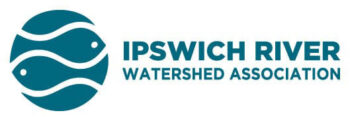Today, I had the pleasure of experiencing Wenham’s Bessie Buker Elementary School Greenscapes School Program with my colleague Rachel Schneider, who is the Ipswich River Watershed Association Outreach Manager. We started by setting up in the cafeteria, which was transformed into an environmental education classroom, complete with groundwater model demonstrations and an Enviroscape model that demonstrates how fertilizer, oils, road salt and pet waste can be carried right into our drinking water supply and recreational waterbodies by rain events.
After set-up, Rachel provided an orientation to the volunteers who were tasked with running each station. It was great to hear the parent’s discuss water supply issues and sources of pollution within the watershed at the watershed mapping station, which ended up being run by former girl scout Amy, who was very familiar with reading topographic maps and orienteering. Just as we were finishing our orientation, the students arrived, eager to learn about the water cycle, watersheds, groundwater, impervious (and pervious) surfaces, wastewater treatment and water-issue remediation.
At first, I thought I wanted to lead the groundwater modeling station where pollutants in the form of colored dye are injected into underground storage tanks or septic systems, then the effluent (liquid waste discharge) can be observed traveling through different layers of the ground. The pollutant, aka dye, eventually makes its way to a recreational water body, drinking water well and a deep aquifer. This station really interested me because it is so important for people to understand that groundwater is connected and our actions in one area (such as water withdrawals adjacent to the river, or improper disposal of chemical/ pharmaceutical waste) will inevitably impact groundwater (as well as humans and the ecosystem) much farther away. This station has implications for our drinking water and recreational waterbody health, as well as the health of our rivers, wetlands and coasts; issues that are very important to me as the Science and Restoration Program Manager for the Ipswich River Watershed. While the groundwater model was very interesting, I was more drawn to the wastewater treatment section.
Growing up my dad had an excavating company and installed septic systems, so I grew up understanding where waste went. However, as I grew up and continued my studies with a focus on water quality, I had the pleasure of visiting numerous Wastewater Treatment Plants, where I was always amazed at the process by which wastewater is cleaned up by micro-organisms to the point where it can be used as irrigation or (in some cases) even be consumed! Some highlights from my experience running the wastewater treatment station were:
- One student shared a story that he had been reprimanded by the septic pumper due to his use of ‘flushable’ wipes at his home, which then needed to be removed from his household pipes!
- Another student informed me that he was having his septic system pumped today.
- The cutest comment had to be the question of why, of all days, did we choose Valentine’s Day to discuss something so yucky.
I had a great time participating in the Greenscapes/ Keeping Water Clean Program and I would encourage as many Towns and school groups as possible to get involved in this effort. Educating students on environmental issues is a surefire way to institute a cultural shift in the way our society thinks about and interacts with our environment.
We are thrilled to have 23 Greenscapes communities this year, the most ever, and to bring the Greenscapes program to more people than ever. If you are interested in bringing the Greenscapes program to your community contact Kristen Grubbs at [email protected]
[blog_subscription_form title=”Subscribe For More River Updates”]
